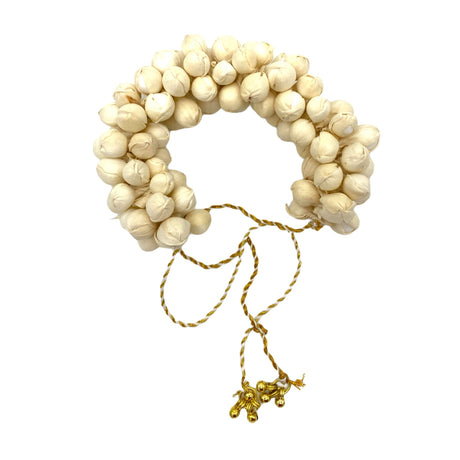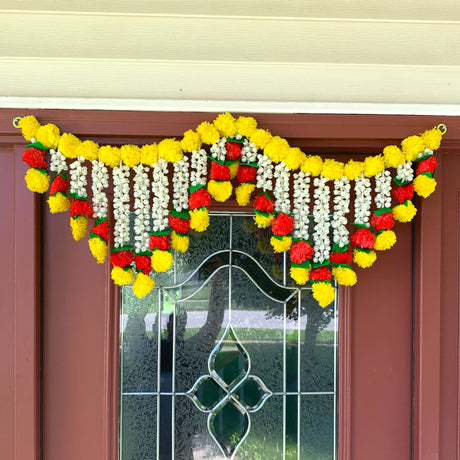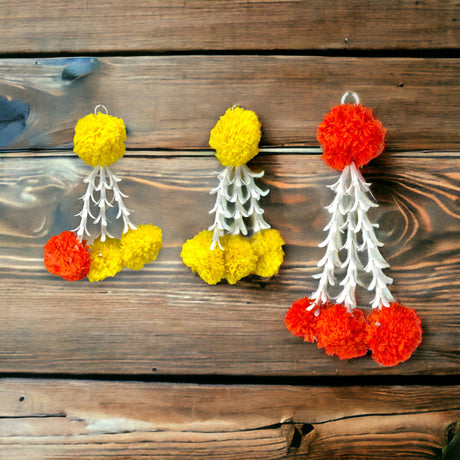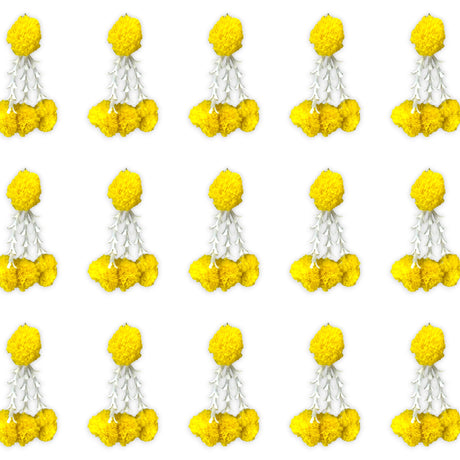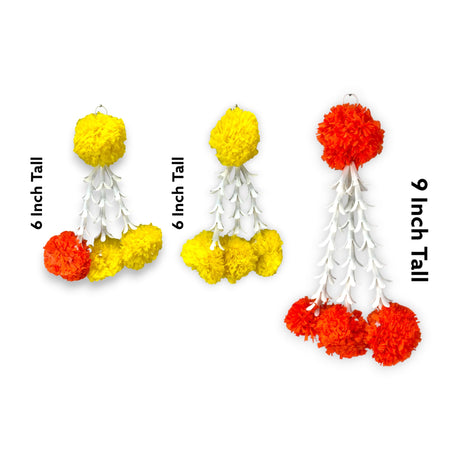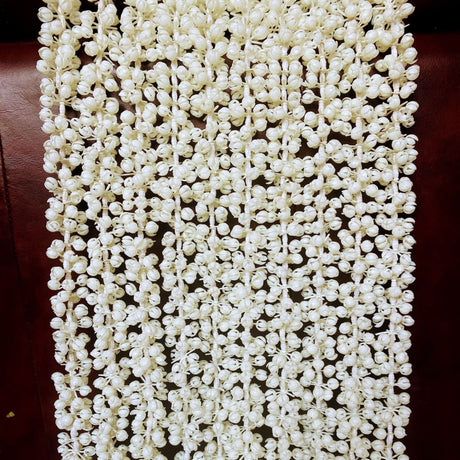Introduction
Shiv Puja, an important practice in Hindu tradition, is highly valued by devotees who seek spiritual growth and blessings from the divine. This sacred ritual involves worshipping Lord Shiva, the Supreme Being known for his cosmic energy and spiritual power. Through Shiv Puja, devotees aspire to achieve inner peace, enlightenment, and the favor of Lord Shiva.
In this comprehensive guide, you'll learn:
- The step-by-step process of performing Shiv Puja with devotion.
- Essential items required for the ritual.
- Detailed explanations of each step to ensure a meaningful and authentic worship experience.
Explore our brass Shiv Parivar idol statue and Shiv Puja kit to enhance your puja setup.
Understanding Lord Shiva
Lord Shiva, often referred to as Mahadev or Bholenath, holds a pivotal role in Hinduism as the Supreme Being. Revered as the destroyer among the Hindu trinity (Trimurti), which includes Brahma and Vishnu, he embodies the cosmic forces of creation, preservation, and destruction.
Attributes and Symbolism
Lord Shiva's unique attributes and symbolism set him apart from other deities:
- Third Eye: Represents his omniscience and the power to destroy evil.
- Trident (Trishul): Symbolizes three fundamental aspects of life: creation, preservation, and destruction.
- Crescent Moon: Signifies the cyclical nature of time.
- Ganga River: Flowing from his matted hair, it represents purity and the flow of divine knowledge.
- Serpent (Naga): Coiled around his neck, indicating mastery over fear and death.
These symbols collectively illustrate Shiva's profound connection to both cosmic order and spiritual awakening. His depiction as an ascetic yogi highlights his role as a guide for those seeking inner peace and enlightenment.
For devotees looking to deepen their spiritual practice, incorporating items like a Shiva Lingam with Sheshnag Trishul Copper Stand can enhance their worship ritual by bringing the divine presence into their sacred space.
Preparation for Shiv Puja
Preparing for Shiv Puja is an essential step towards ensuring a successful and spiritually enriching ritual. The right items and a sanctified space can enhance the devotion and positive energy during the worship.
Essential Items Needed for Shiva Puja
To perform Shiv Puja, gather the following items:
- Lord Shiva Photo: A photo or idol of Lord Shiva to focus your worship.
- Abil: A type of fragrant powder used in rituals.
- Gulal: Colored powder often used in religious ceremonies.
- Kanku: Red vermillion powder, used for marking the forehead and offerings.
- Sindoor: Another form of red powder, often used in conjunction with Kanku.
- Janoi: Sacred thread worn by Hindu males during the ceremony.
- Sopar: Betel nut, used in various offerings and rituals.
- Gopi Chandan: Sacred clay used for making tilak marks on the forehead.
- Agarbatti (Incense Sticks): To purify the air and create a serene environment.
- Kapur (Camphor): Used for its purifying properties and during the aarti.
- Nadachaddi: Sacred thread often used in tying rituals or as part of the offerings.
- Madh (Honey): One of the elements of Panchamrit, symbolizing sweetness and prosperity.
- Atar (Perfume): Fragrance offered to deities as a sign of respect and devotion.
- Cotton Wicks: Used in oil lamps during the puja.
- Jav: Barley grains used in various offerings and rituals.
- Kamal Kakdi (Lotus Root): Often included as a special offering due to its sacredness.
- Sarsav (Mustard Seeds): Used in sanctifying the space and offerings.
- Sugar: An essential part of Panchamrit and other offerings representing sweetness.
- Black Thread: Often tied around the wrist for protection or used in rituals.
- Elaichi (Cardamom): Included in offerings for its fragrance and taste.
- Laving (Cloves): Used for their aromatic properties in various rituals.
- Taj (Cinnamon): Another aromatic spice included in offerings or as part of incense mixtures.
- Sarsiddhi: Specific ritual items or implements associated with achieving success.
- Gangajal: Holy water from the Ganges, symbolizing purity.
- Panchamrit: A sacred mixture of milk, curd, honey, ghee (clarified butter), and sugar.
- Bilva Leaves: Considered highly auspicious and dear to Lord Shiva.
- Sandalwood Paste: Used for its cooling properties and divine fragrance.
- Incense Sticks (Agarbatti): To purify the air and create a serene environment.
- Oil Lamp (Diya): Often made with ghee or mustard oil to symbolize divine light.
- Flowers: Fresh flowers like Datura, Jasmine, and Roses are commonly offered.
- Naivedhya: Food offerings such as fruits or sattvic recipes made without onions and garlic.
These items reflect the devotee's respect and reverence towards Lord Shiva.
Setting up a Clean and Sacred Puja Space
Creating a conducive environment is just as important as gathering the essentials. A clean, organized puja space invites positive energies and helps in maintaining focus during the ritual.
- Select a Quiet Spot: Choose a calm area in your home where you won't be disturbed.
- Cleanliness is Key: Ensure the space is clean and clutter-free. Physical cleanliness often translates to mental clarity.
- Arrange Items Systematically: Organize all puja items neatly on a small table or altar. This helps in smooth progression during the ritual.
- Light an Oil Lamp: Place an oil lamp at the center of your setup. The lamp symbolizes divine presence and dispels negativity.
- Use Fresh Flowers: Decorate the space with fresh flowers to enhance its sanctity.
- Incense Sticks for Fragrance: Light incense sticks to create a fragrant atmosphere that aids concentration.
By meticulously preparing both the items and the space, devotees create an environment conducive to deep spiritual connection with Lord Shiva during the puja.
Performing Shiv Puja: A Step-by-Step Guide
Step 1: Invocation and Worship
Invoking Lord Shiva with reverence is the first step in performing Shiv Puja. This step sets the tone for the entire ritual, inviting divine presence into your sacred space.
1. Chanting Sacred Mantras
Begin by chanting mantras dedicated to Lord Shiva. The most commonly recited mantra is Om Namah Shivaya, which translates to "I bow to Shiva." This powerful chant is believed to purify the mind and soul, preparing you for deeper spiritual connection.
2. Lighting Incense and Lamps
Light incense sticks and an oil lamp (preferably using ghee) to purify the environment. The fragrance of incense symbolizes devotion, while the light from the lamp dispels darkness and invites positive energy.
3. Offering Flowers
Present fresh flowers at Lord Shiva's feet. Flowers symbolize purity and beauty, making them a perfect offering. Common choices include Datura flowers and Bilva leaves, both considered highly auspicious.
4. Recitation of Hymns
Recite hymns or Shiva Stotras (hymns in praise of Shiva) such as the Shiva Tandava Stotram. These recitations help focus your mind on the divine attributes of Lord Shiva.
5. Mental Preparation
Approach this step with a calm mind and pure heart. Mental readiness enhances the efficacy of your prayers, allowing you to connect deeply with Lord Shiva's divine energy.
By following these steps with genuine devotion, you create a sacred atmosphere that honors Lord Shiva and prepares you for the subsequent rituals in Shiv Puja.
Step 2: Offering Panchamrit
Panchamrit is a sacred mixture used in rituals for Shiva Puja, symbolizing purity and devotion. It is made up of five ingredients: milk, curd, honey, ghee, and sugar. Each element holds spiritual significance:
- Milk represents purity and nourishment.
- Curd signifies prosperity.
- Honey symbolizes sweetness in life.
- Ghee denotes strength and vitality.
- Sugar embodies bliss.
Preparing Panchamrit
To prepare Panchamrit for your Shiv Puja:
- Gather Ingredients: Collect fresh milk, curd, honey, ghee, and sugar.
- Clean Vessel: Use a clean silver or copper vessel for mixing the ingredients.
- Mixing Order: Start by pouring milk into the vessel. Add curd, followed by honey, ghee, and finally sugar.
- Stir Gently: Mix the ingredients gently to create a homogenous blend.
Presenting Panchamrit
During the puja:
- Place the vessel containing Panchamrit on the puja altar.
- Offer it to Lord Shiva with reverence while chanting mantras like Om Namah Shivaya.
- After the offering, distribute Panchamrit as prasad among devotees to share divine blessings.
By incorporating these steps in your ritual, you honor Lord Shiva with a heartfelt gesture of devotion. This practice enhances the spiritual atmosphere and deepens your connection with the divine.
Step 3: Performing Abhishekam Ritual
Abhishekam, often referred to as the holy bath, is a vital ritual in Shiv Puja. This step involves cleansing the idol or image of Lord Shiva, symbolizing purification and the removal of negative energies. Performing Abhishekam with devotion invites divine blessings and spiritual growth.
Detailed Process of Performing Abhishekam
- Preparation: Begin by arranging all necessary substances for the ritual. Ensure the puja space is clean and serene.
- Invocation: Invoke Lord Shiva through chanting sacred mantras like Om Namah Shivaya. This sets a reverent tone for the ritual.
- Offerings: Pour various substances over the idol, each carrying its own symbolism and benefits:
- Water: Pure water symbolizes purity and clarity.
- Milk: Cow’s milk represents nourishment and auspiciousness.
- Gangajal: Sacred water from the Ganges signifies spiritual purification.
- Honey: Honey represents sweetness and bliss in life.
- Other substances can include curd, ghee, sugarcane juice, and coconut water.
Each substance carries its own symbolism and benefits, enhancing the spiritual essence of the ritual.
Types of Substances Used for Abhishekam
- Water: Purifies and cleanses.
- Milk: Nourishes and sanctifies.
- Gangajal: Bestows spiritual purity.
- Honey: Brings sweetness in life.
Conducting Abhishekam with these offerings fosters a deep connection with Lord Shiva, purifying both the physical space and one's inner self.
Step 4: Making Other Offerings to Lord Shiva
Offering various items to Lord Shiva forms a fundamental part of Shiv Puja, symbolizing both reverence and devotion. Each offering carries a unique significance, enhancing the spiritual experience.
Bilva Leaves and Flowers
- Bilva Leaves: Known as Bel Patra, these trifoliate leaves are considered highly auspicious. They symbolize the trinity of Brahma, Vishnu, and Shiva and their use signifies purity and devotion.
- Flowers: Fresh and fragrant flowers like Datura, Lotus, and Jasmine are offered to Lord Shiva. These symbolize the beauty of nature and the devotee's heartfelt respect.
Incense Sticks and Lamps
- Incense Sticks: Lighting incense sticks (Agarbatti) creates a sacred atmosphere. The fragrant smoke is believed to carry prayers to the divine.
- Oil/Ghee Lamps: Lighting a lamp symbolizes dispelling darkness and inviting divine light into our lives. It signifies knowledge and wisdom.
Naivedhya (Food Offerings)
Presenting food items, known as Naivedhya, is an act of devotion reflecting gratitude for divine blessings.
- Fruits and Sattvic Recipes: Offering fresh fruits, sweets, or other sattvic foods prepared without garlic or onions is customary. This act symbolizes purity and simplicity.
Making these offerings with sincere devotion invites divine blessings, promoting spiritual growth and inner peace.
Step 5: Performing Aarti Ceremony for Lord Shiva
The Aarti ritual is an important part of Shiv Puja, representing the peak of devotion and the act of inviting divine blessings. Through Aarti, devotees show their respect and gratitude to Lord Shiva, asking for his protection and grace.
Spiritual Benefits:
- Brings inner peace and strengthens spiritual connection
- Drives away negativity and welcomes positive energies
- Deepens the relationship between the devotee and Lord Shiva
How to Perform Aarti Effectively with Devotion:
- Prepare the Aarti Plate: Arrange items such as a small lamp (diya) with ghee or oil, camphor, incense sticks, and flowers on the plate.
- Light the Lamp: Carefully light the diya and incense sticks. The flame represents divine light guiding spiritual growth.
- Chant Mantras: Begin chanting sacred mantras like Om Namah Shivaya or Maha Mrityunjaya Mantra.
- Perform Circular Motions: Hold the lit lamp in your right hand and perform circular motions in front of Lord Shiva’s idol or image. Move clockwise to show respect.
- Sing Aarti Hymns: Sing traditional Aarti hymns dedicated to Lord Shiva, such as Jai Shiv Omkara.
- Offer Flowers: As you conclude, gently place flowers at the feet of Lord Shiva’s idol.
- Distribute Prasad: Share the prasad (sacred food offering) with family members or fellow devotees.
This heartfelt ritual not only honors Lord Shiva but also purifies the mind and soul, fostering an environment of devotion and sanctity.
Step 6: Completing the Ritual with Pradakshinam (Circumambulation)
Performing Pradakshinam around the idol or image of Lord Shiva is a profound way to show reverence and devotion. This act signifies the devotee's recognition of the deity as the central point of their existence.
Steps to Perform Pradakshinam:
- Stand before the idol: Ensure you are facing Lord Shiva.
- Join hands in Namaskar Mudra: This gesture symbolizes humility and respect.
- Walk clockwise: Begin circumambulating the deity in a slow, meditative pace, maintaining focus and reverence.
- Chant mantras: Recite sacred mantras like Om Namah Shivaya during each round.
Spiritual Benefits:
- Deepens Connection: Enhances your spiritual bond with Lord Shiva by circulating positive energies.
- Inner Peace: Promotes a state of tranquility and mindfulness.
- Holistic Healing: The movement and chanting together create a balanced flow of physical and spiritual energies.
Each step in this guide, including Pradakshinam, enriches the ritual experience, drawing devotees closer to divine blessings.
Special Pujas and Festivals Related to Lord Shiva
Maha Shivaratri
Maha Shivaratri, known as the "Great Night of Shiva," is one of the most significant festivals dedicated to Lord Shiva. Celebrated annually, this auspicious occasion falls on the 14th day of the dark fortnight in the month of Phalguna (February-March). Devotees observe:
- Fasting: Many devotees fast throughout the day, abstaining from food and water to purify their bodies and minds.
- Night-long Vigil: Temples are adorned with lights and flowers, and devotees stay awake all night, chanting Om Namah Shivaya and other sacred mantras.
- Special Pujas: Elaborate rituals including Abhishekam with milk, honey, and Gangajal are performed to honor Lord Shiva.
Pradosham Vrat
Pradosham Vrat is another vital observance dedicated to Lord Shiva. Taking place twice a month during the twilight period (Pradosha) on the 13th day of both the waxing and waning moon phases, it signifies a time when divine energies are at their peak. Key practices include:
- Fasting: Devotees keep a strict fast from sunrise until sunset, breaking it only after performing the evening rituals.
- Evening Rituals: Special pujas are conducted during the Pradosham time (1.5 hours before sunset), where offerings such as Bilva leaves and sacred ash are made.
- Chanting and Meditation: Devotees chant Shiva Mantras and engage in meditation to seek forgiveness for past deeds and invoke divine blessings.
These special occasions offer profound opportunities for spiritual growth, deeper connection with Lord Shiva, and receiving his benevolent blessings.
Avoiding Common Mistakes During Shiv Puja
When performing Shiv Puja, devotees often make inadvertent errors that can affect the sanctity and effectiveness of the ritual. Being aware of these common mistakes helps in conducting a more sincere and respectful puja.
Inappropriate Offerings
- Non-Vegetarian Food: Avoid offering non-vegetarian items as they are considered impure.
- Onions and Garlic: These items are traditionally avoided due to their strong odors and effects on the mind.
- Stale or Wilted Items: Always use fresh flowers, leaves, and other offerings to maintain purity.
Incorrect Mantra Pronunciation
- Focus on Pronunciation: Mispronouncing mantras can alter their meaning. Practice the correct pronunciation and rhythm.
- Lack of Sincerity: Recite mantras with full devotion and concentration to invoke divine blessings effectively.
Disrespectful Attitude
- Casual Approach: Approach the puja with reverence. A casual or hurried attitude can diminish the spiritual connection.
- Inattention: Stay focused throughout the ritual, avoiding distractions to maintain a sacred atmosphere.
Paying attention to these aspects ensures that your Shiv Puja is performed with utmost respect and devotion, aligning with traditional practices.
Conclusion: Embracing Spiritual Growth Through Regular Worship Practices
Spiritual growth through Shiv Puja goes beyond elaborate rituals and finds its true meaning in daily worship practices. By incorporating these practices into your life, you can experience profound spiritual enlightenment and inner peace.
Here are some key practices to embrace:
- Daily Devotion: Set aside time each day for a simple yet sincere worship routine.
- Chanting Mantras: Regularly chant sacred mantras like Om Namah Shivaya to maintain focus and create a meditative atmosphere.
- Offering Sincere Prayers: Make humble offerings with pure intent, showing respect and devotion.
- Meditation and Reflection: Combine your worship with meditation to deepen your connection with Lord Shiva.
- Selfless Service (Seva): Engage in acts of kindness and compassion, embodying the teachings of Lord Shiva.
By integrating these practices into your life, you invite divine blessings and open yourself up to spiritual growth and self-awareness.


















